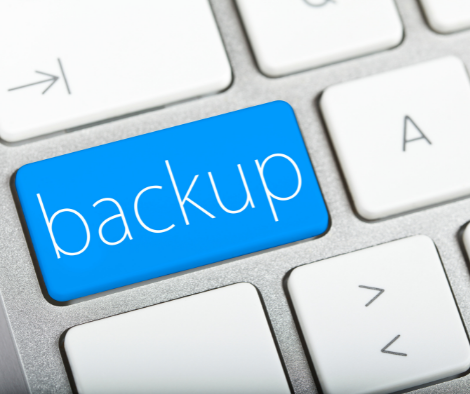Data Recovery is the process of salvaging and retrieving corrupted, deleted, or lost files from a defective hard drive.
Data can be lost for a variety of reasons, including physical damage to the drive, logical damage to the file system, or accidental deletion this leads to the loss of critical information. In some cases, data loss can also be caused by malware or ransomware attacks.
In most cases, data recovery is possible if the drive itself is still functioning. Data recovery software can be used to scan the drive and identify areas where data may be recoverable. Once the software has located the data, it can then be copied to a new location, such as an external hard drive or a USB.
In some cases, data recovery may require more invasive methods, such as opening up the hard drive and directly accessing the data. However, this should only be attempted by experienced professionals, as there is a risk of further damaging the drive.
What are the differences between Backups and Recovery?
Backups are like an insurance policy for your database. They provide peace of mind knowing that you’ll be able to restore it if there’s ever a failure, whereas recovery is simply the process where all data gets restored back to its original state.
Why Data Backup and Recovery is important for Businesses
Data backup and recovery are important for any business or individual who uses computers to store information. Data loss can occur due to hardware failure, software corruption, natural disasters, or even human error. If you do not have a backup of your data, you risk losing everything.
Back-ups allow you to restore your data in the event of data loss. There are many ways to back up data, including external hard drives and cloud storage. Data backup is a simple process, and it is essential to protecting your information.
How is Data Recovery performed?
Data recovery is a complex process that requires expert knowledge and specialized tools. Attempting to recover data yourself can often do more harm than good, as you may inadvertently overwrite critical data or damage the storage device.
Data recovery services are provided by trained professionals who have the experience and expertise to retrieve data safely and effectively. So, if you’re facing a data loss situation, don’t try to go it alone – contact a professional data recovery service for help.
Can I recover my Data myself?
There are several free tools available that can help you to recover your lost data. These tools typically use a variety of techniques, including file carving, raw file recovery, and disk scanning. However, not all tools are created equal, and neither is they type of data loss you may have suffered.
As such, it is always advisable to refer to a trained Data Recovery Specialist.
How long does it take?
The amount of time it takes to recover your data will vary depending on the problem. After a technician has taken care of and diagnosed what’s wrong, you’ll be able to get an estimate for how long everything should go in recovering all that crucial information!
How much does it Cost?
The standard price for successful recovery is around $330, depending on where you go. However, if your data requires more than 1 Terabyte of storage space, you will likely be charged an extra fee based on each additional TB required to complete the task. Other factors including the type of drive, or device it is retrieved from can also alter the cost.
Like this article? Follow us on Facebook for more info, article and more!




